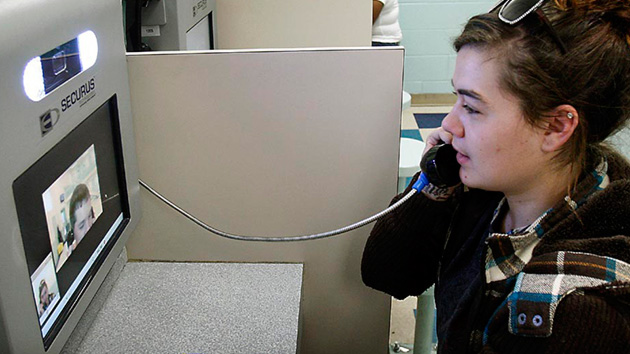
Willacy County Correctional CenterDavid Pike/AP/<em>Valley Morning Star</em>
Wielding pipes as weapons, 2,000 inmates at Willacy County Correctional Center in Raymondville, Texas, broke out of their dormitories, started fires, and seized control of the federal prison on Friday. Correctional officers responded with tear gas, but it still took them two days to subdue the uprising. Now all the prison’s inmates—mostly immigrants who were caught reentering the United States after being deported—are being relocated to other prisons.
This is at least the second protest at Willacy in two years, and prison reform advocates say they’re not surprised. They describe the facility as filthy, neglectful of its inmates’ health, and in some cases outright abusive. “A lot of people get very upset and angry,” one prisoner told investigators from the American Civil Liberties Union (ACLU) last year. “Sometimes they become so frustrated that they even speak of burning down the tents. But what’s the point? They’d build them back up.” What exactly is going in Raymondville?
What kind of prison are we talking about?
Willacy is part of a network of 13 “Criminal Alien Requirement” prisons: privately run facilities that contract with the government to detain noncitizens, most of whom have been convicted of immigration offenses. As of February 19, CAR prisons held more than 24,000 inmates—2,800 of them at Willacy. The prison’s Kevlar tent dormitories—in which prisoners are said to be so tightly packed that when they lie in their bunks, their feet can touch the bunk next to them—have earned it the nickname “Tent City” among locals.
When the Utah-based Management and Training Corporation opened Willacy in 2006, it held people detained by Immigration and Customs Enforcement who were awaiting deportation. But county officials were unhappy that the center was never at capacity, which kept revenue lower than they had hoped. Following reports of abuse and suffering at Willacy, including guard-on-inmate sexual violence and maggots in the food, ICE relocated its detainees in 2011.
MTC then signed a contract with the Bureau of Prisons. The facility now holds people with immigration issues who are also serving time for federal crimes. Some have drug convictions, but in many cases their crime is crossing the border without a visa—an offense that US officials increasingly prosecute with prison time, not just deportation.
Did things improve after the new contract?
Not according to the ACLU. Last year, it released a report on Willacy and the other four CAR prisons in Texas. Carl Takei, one of the ACLU lawyers who worked on the report, called last week’s uprising “a predictable consequence” of the state in which he found Willacy in late 2013. “The overwhelming impression that I came away with was a near-universal sense of despair,” he told me.
The conditions Takei and other ACLU investigators say they encountered at the prison included:
- Disgusting living quarters: Inmates’ clothes were washed in the same laundry load as mops and cleaning equipment, insects and spiders crawled into the tents and bit people, and raw sewage overflowed from toilets.
- Excessive solitary confinement: Inmates were placed in the hole simply for requesting new shoes or food. Prisoners also reported that being in solitary drove them to hurt themselves or attempt suicide. “People could be heard screaming and kicking their doors all day,” one man said.
- Lack of basic medical care: If you have a toothache at Willacy, the only treatment you can get is extraction. Inmates described going to the medical staff for a diagnosis, only to be handed Tylenol and sent away. One man was told he had hepatitis C, but two years later he had yet to receive any treatment for it.
Is that what set off last week’s uprising?
Outrage over inadequate health care sparked last week’s protest, according to the Associated Press. On Friday morning, prisoners refused to do chores or eat breakfast. Around 1 p.m., inmates broke out of their housing and occupied the rec yard, and shortly after they set fire to at least three of the Kevlar domes. Guards fired tear gas at the inmates, and county police drove armored vehicles into the prison. Eventually the FBI took over negotiations, which continued through Saturday night.
MTC maintains that its prisoners “receive timely, quality health care.” But Takei says medical treatment is an issue across the board at CAR prisons. In 2009, inmates at Reeves County Detention Center in Texas burned down part of the prison after Jesus Manuel Galindo died of a seizure while in solitary confinement. In 2012, prisoners at another facility in Natchez, Mississippi, started a protest over health care that left one guard dead and 20 injured.
Inmates at Willacy have protested other issues in recent years, too. In 2013, 30 prisoners occupied the rec yard after guards ignored their complaints about overflowing toilets.
So what happens now?
The uprising left parts of the prison “uninhabitable,” according to the Bureau of Prisons. Inmates are being transferred to other facilities (including, but not exclusively, CAR prisons) so authorities can assess the extent of the damage. About 720 have been moved so far, although cold weather is slowing the evacuation. Officials are unsure how long Willacy will remain closed.











